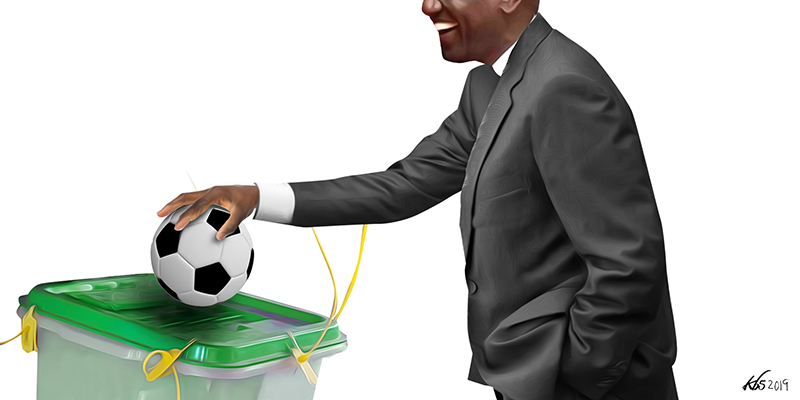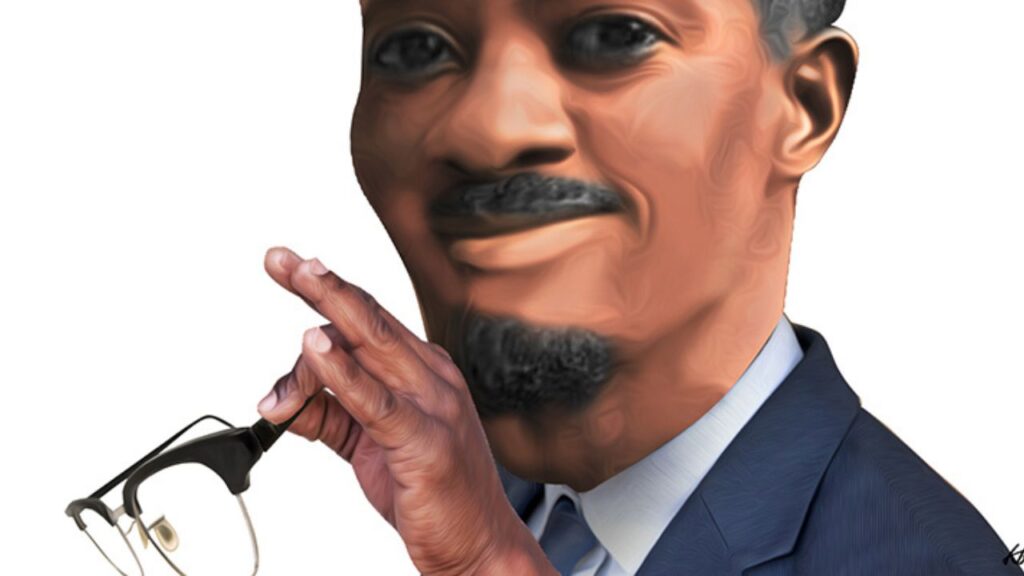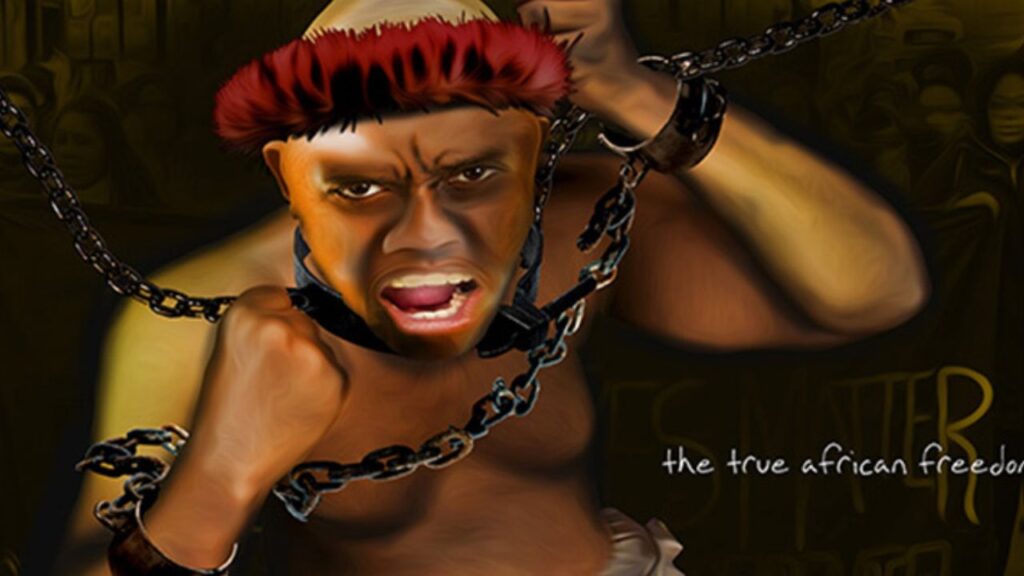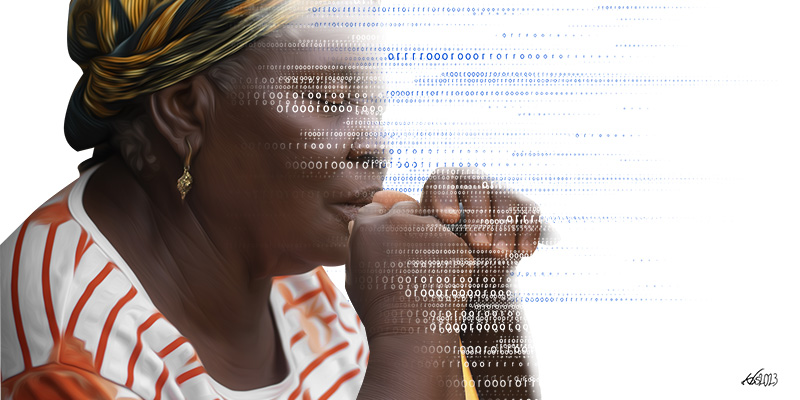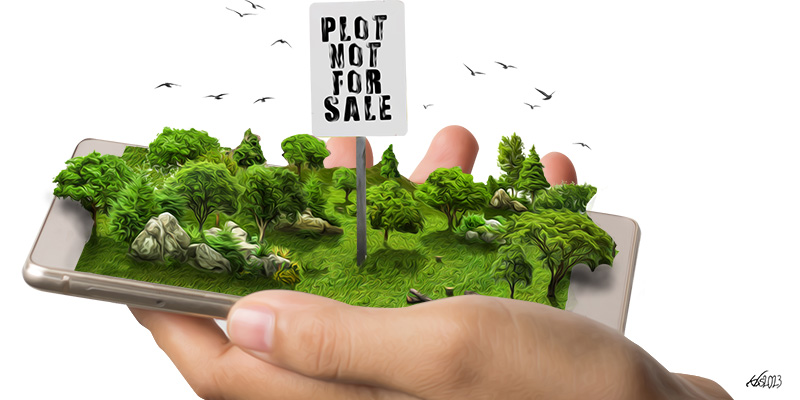Something startled where I thought I was safest. – Walt Whitman
My Dungeons Shook – The Fire Next Time by James Baldwin
On Saturday 9, 2019, two days after the hotly contested Kibra by-election had taken place and the dust had settled, Raila Odinga, aka Baba, was in an ecstatic mood: he gathered around some of his closest associates that had helped him campaign to retain the Kibra seat by hook or crook for a toast-up at his Karen home.
The ODM party candidate had triumphed over an onslaught that had threatened to torpedo Raila’s iron-grip stranglehold over a constituency that had, over time, become synonymous with his name and political career. But it was a victory that been won with “blood”: Bernard Otieno Okoth, aka Imran, took 24,636 votes while his closest nemesis, McDonald Mariga Wanyama, an international footballer-turned-betting-billboard-face, had carted away 11,230 votes. Although there were no casualties, voters had been roughed up and beaten.
As one of ODM’s foot soldiers from Ololo (Kaloleni estate, off Jogoo Road in Makadara constituency) later confided in me, “There was no way those rural folks (referring to William Ruto’s gang of MPs, mainly from western Kenya, and their supporters) were going to storm our grounds. Hii tao ni yetu, tumekuwa na mzae tangu 90s, na tumepingana vita nyingi sana…hao watu walikuwa wanacheza na nare.” This is our turf and we’ve been with Raila ever since the 90s, and we’ve fought many bloody wars, those people were stoking a war and playing with fire.
As a diehard supporter of Raila Odinga, the stocky foot soldier, now in his late 30s (he is a former bantamweight boxer)m said he had not slept for three consecutive days: “Kibra ni bedroom ya mbuyu na wewe unaleta mbulu pale…utatembea buda.” Kibra is the old man’s bedroom and you want to desecrate it…you’ll pay for it.
He said in those three days, all the foot soldiers’ work was to screen all “foreigners” entering Kibra. This was evident to me because I had also been forewarned by my minders that I should now be extremely careful when going to Kibra for my journalistic work.
And that is all that mattered. The rest of other 22 contestants were neither here nor there, including ANC’s Eliud Owalo, a one-time Raila’s confidante who collected 5,275 votes.
According to IEBC (Independent Electoral and Boundaries Commission)’s 2017 figures, Kibra has 118,658 registered voters and 24 polling stations. In the just-concluded by-election, a paltry 41,984 people voted, constituting 35 per cent of the electorate. In the 2017 presidential election, 18,000 people voted for Uhuru Kenyatta, the Jubilee Party’s presidential candidate. The Jubilee Party candidate Doreen Wasike got 12,000 votes. The 6,000 extra votes that increased Uhuru’s number to 18,000 came from the Nubian community resident in Kibra.
As Raila and his friends were sipping champagne on a sunny Saturday afternoon, Ruto was gnashing his teeth, furious to the point where he refused to meet with the buddies he had campaigned with, according to media reports. However, his chief noisemaker, the rabblerouser Dennis Itumbi, denied that his boss was in a foul mood after the by-election.
Kibra constituency, formerly part of Langata constituency, has been a hotbed of political contests ever since Raila opted to stand in the constituency in 1992, the year the country returned to multiparty politics. Two years before that, in 1990, Raila, who had been exiled in Norway, had come back to Kenya to be part of the “Young Turks” who agitated and pushed for political reforms. He had stood in what was then known as Kibera constituency in the first multiparty general election and from then on Kibera became his enclave. That is why, in the run-up to the by-election, Raila “privatised” the constituency and called it his bedroom, in a (desperate) effort to rally around his troops to vote for Imran and to affirm to his current biggest political rival, William S Ruto, that Kibra was impenetrable to the latter’s political whims.
According to IEBC (Independent Electoral and Boundaries Commission)’s 2017 figures, Kibra has 118,658 registered voters and 24 polling stations. In the just-concluded by-election, a paltry 41,984 people voted, constituting 35 per cent of the electorate.
That is why the Kibra by-election was not so much about the 24 contestants that took part in the race, but was more of a competition between the two biggest political parties, the ruling party Jubilee and ODM, and between Raila Odinga and William Ruto. Imran and Mariga were just pawns in a much bigger and wider plot linked to the 2022 presidential succession political chess game in which the two have staked their ambitions and claim.
Three weeks to the by-election, I met with one of Ruto’s bosom buddies who was coordinating the campaign behind the scenes. “If we wrestle the Kibra seat from the kitendawili (riddles) man, we’ll have completely changed the political map of not only Nairobi County, but of the country,” he had said to me. “We will configure national politics and consign Raila to a corner. And then relish to face him in 2022.”
The Ruto man told me that in the lead-up to 2022, their chief tactic is to draw Raila into a two-horse race, in which case, “I can assure you, we’ll pulverise the enigma [one of the monikers used to describe Raila] once and for all”.
It understandable, hence, for Ruto to have taken the defeat personally and Raila to have gloated – but for how long?
In many ways, the by-election was a curtain raiser, a preamble and a showdown of what to expect in 2022, the year Kenyans once again go to the polls to elect a new president. The violence witnessed in Kibra will be multiplied at the national level. The money that was thrown at the electorate in little Kibra will seem like cash for an afternoon picnic as the chief contestants in 2022 open their war chests to woo an even hungrier electorate, ready to settle scores and be manipulated. The shadow line-ups that we saw falling respectively behind the protagonists will be reshaped many times over before 2022.
The by-election was also about the “big boys” (Raila and Ruto) settling scores and about cementing the burial rites of the already dead NASA (National Super Alliance), the fledgling and motley coalition that brought together Raila Odinga, Kalonzo Musyoka, Moses Wetangula, and Musalia Mudavadi. In addition, it was about the extension of the supremacy battles being fought between the Jubilee Party wing of President Uhuru Kenyatta and its rival that is being led by his deputy – in essence, the trooping of colours between #Kieleweke group and the #Tanga Tanga brigade.
Could this by-election also have signalled the death knell of the Jubilee Party as currently constituted?
The Ken Okoth factor
The by-election was a function of several variables, including what can be referred to as the Ken Okoth factor. Okoth, who died from colon cancer at the age of 41, was the Kibra MP when he succumbed to the killer disease on July 26, 2019.
Okoth was elected in 2013 in the newly created Kibra constituency, which was hived off from the larger Langata constituency to Raila’s chagrin. (This is a public secret.) Even though Okoth was elected on an ODM ticket, he was not Raila’s first choice. Okoth was an independent-minded politician and a popular and well-liked local boy. Home-grown and well-educated, he understood the problems of the infamous Kibera slum like the back of his hand. He was suave, well-spoken and a terribly likeable man.
When he became the MP, he charted an even more independent path: he decided he was not going to be anybody’s protégé. So he cultivated his political friendships across party divisions. As a man who understood the power of education (he was the recipient of a sound education from Starehe Boys’ Centre, where he was educated on a full bursary), he invested heavily in education in Kibra. A good secondary education, like he used to say, had saved him from the clutches of poverty.
Okoth built eight secondary schools in Kibra and expanded many of the primary schools to have a secondary school wing. He rightly argued that since many Kibra parents could not afford to take their children to boarding schools, he would lighten their burden by constructing local secondary schools. He also gave out lots of bursaries to parents who struggled with fees. Any pupil who got 350 points or more in his or her KCPE (Kenya Certificate of Primary Education) exam got full bursary to transition to high school.
Even though Okoth was elected on an ODM ticket, he was not Raila’s first choice. Okoth was an independent-minded politician and a popular and well-liked local boy. Home-grown and well-educated, he understood the problems of the infamous Kibera slum like the back of his hand.
Juliet Atellah, a Kibra resident from Gatwekera village in Sarang’ombe and a double maths and statistics major from the University of Nairobi can attest to this. “When Okoth become MP, he told us education was the key to success. He implored us to work hard in school as he also worked hard to ensure Kibra youth interested in education benefitted from a bursary.” It is something that Okoth continually preached till his death.
Okoth, also, through his Jubilee Party networks, tapped into the National Youth Service (NYS) resources to create some employment opportunities for the youth of Kibra. This cross-cutting political parties’ engagement would land him into trouble with ODM mandarins who accused and suspected him of cavorting with the enemy. “By opting to work with Jubilee Party functionaries, Okoth looked at the bigger picture: what mattered most, according to him, was how best to improve the quality of lives of Kibrans. If the help would come from his presumed ‘political antagonists’ so be it,” said a friend of the late MP.
He relegated the work of managing the bursaries through the Constituency Development Fund (CDF) to his brother Imran. Little wonder then that his brother clinched the ODM ticket, but not without loud grievances. According to my sources within the ODM party, Peter Orero (popularly known as mwalimu), the Principal of Dagoretti High School, and also the former principal of Upper Hill High School, had won the ticket, but to stem the fallout that was going to befall the party as it faced its greatest onslaught from Ruto, a man who was staking his all to capture the seat, Raila opted to hand the ticket to the former CDF manager.
Disgruntled followers
Kibra constituency residents are some of the most politically “woke” electorate that this country has ever produced. Their political consciousness is high and battle-hardened from their brutal fights with the Kanu regime in the 1990s. The people of Kibra know their politics well. This is courtesy of Raila Odinga, who for a long time championed the political struggle for equity and social justice in the country. As their MP, Raila encouraged Kibra voters to fight for their rights and to demand no less than his rightful representation.
But the burden of the “handshake” between Raila and Uhuru Kenyatta had reared its ugly head and it was evident that Raila struggled when campaigning in his former constituency. “With the handshake, Raila commercialised the struggle,” said a politician who has known him since the multiparty struggles of the 90s. “The handshake had confused his base, angering many and disillusioning a great deal of people who had stood with him all the way. Until, the death of Okoth, Raila had not stepped in Kibra to explain the handshake. Instead, when he shook Uhuru’s hand, he headed to Kondele in Kisumu to appease his other equally fanatical base, 300 kilometres away.”
The politician said that Kibra people have yet to enjoy the handshake’s dividends. “Many of the youths who were shot at by police when defending Raila were from Kibra, yet the handshake projects have all been taken to Kisumu. Although the Kibra electorate is still fanatically loyal to Raila, they were also passing a subtle message to him – it about time you re-evaluated your politics with us.”
Kibra constituency residents are some of the most politically “woke” electorate that this country has ever produced. Their political consciousness is high and battle-hardened from their brutal fights with the Kanu regime in the 1990s.
Hence, it was not lost to keen observers that for the first time since Raila began campaigning in Kibra in 1992, he had been forced to solicit for votes beyond Kamukunji in Sarang’ombe ward. “For the first time,” said a resident of Sarang’ombe, “Raila had been forced to campaign in Bukhungu in Makina, Laini Saba, and Joseph Kange’the in Woodley.” As the area MP, Raila would campaign only in Kamukunji grounds and with that he would seal his victory and close that chapter. The rest of the voters would fall in place.
Sarang’ombe ward has the largest number of voters, largely comprising Luos and Luhyas. The Luos are concentrated in Kisumu Ndogo village, while the Luhyas are to be found in Soweto and Bombolulu villages. There are about 6,000 registered Luhya voters in both the villages, while there could be about 20,000 Luos in Kisumu Ndogo. The other large concentrations of Luhyas are located in Lindi and Makina. Hence the reason why Raila went to campaign in Makina. He also campaigned in Woodley on Joseph Kange’the Road, because it has a large population of Kikuyu voters.
New alliances and 2022 politics
If campaigning on “virgin” territory was not too much of a stretch, Raila had to enlist the support of seven governors: Alfred Mutua of Machakos, Ann Mumbi Kamotho (previously known as Ann Waiguru) of Kirinyaga, Charity Ngilu of Kitui, Kivutha Kibwana of Makueni, James Ongwae of Kisii, John Nyagarama of Nyamira and Wycliffe Oparanya of Kakamega. “Ruto with his loads of money was piling pressure on Raila and he wasn’t going to take any chances,” explained one of Raila’s associates.
So, on October 30, 2019, nominated MP Maina Kamanda, Kigumo MP, Ruth Mwaniki and David Murathe (President Uhuru Kenyatta’s hatchet man) met with Raila to ostensibly pledge the Kikuyu electorate’s and President Uhuru’s support for the ODM candidate Bernard Otieno Okoth aka Imran. At the meeting, Mwaniki hinted that McDonald Mariga Wanyama, the Jubilee Party candidate, had been forced on the party leadership and President Uhuru: “I don’t know why some leaders [referring to Deputy President William Ruto] in Jubilee dragged Mariga into the race.”
In the spirit of the handshake, Kamanda said he would rally the Kikuyu voter to throw his lot with Imran: “When you see me here, know that President Uhuru Kenyatta is here.”
On the previous day, the former Starehe MP had told the Kikuyus in Kibra, “On November 7, please come out in large numbers to vote for Imran. Imran’s victory will be a big win for the unity of this country.” He was referring to the now mercurial political handshake that President Uhuru and Raila cemented on March 9, 2018. The handshake between the two bitterest rivals gave birth to the Building the Bridges Initiative (BBI). The acronym has been baptised many things, the latest one being Beba Baba Ikulu. Take Raila to State House.
On that same day (October 30), Raila had separately met with Kikuyu and Kisii opinion shapers from Kibra at his office in Upper Hill, before descending to Kibra again in the evening, three days after he had held a rally there on October 27, a Sunday. This same day, as Raila met with the respective community leaders, he confided in a mutual friend who he had lunch with at Nairobi Club that Ruto was breathing down his neck, and giving him a run for his money in his erstwhile constituency that he had represented for a quarter of a century.
During the time that Raila stood in Kibra, the Luhya community had also stood with him. They voted for him to the last man, “but when Okoth died, the Luhya nationalists in Kibra and elsewhere thought ‘it was their time to eat’”, a Luhya politician who stood as a senator in western Kenya said. “The Luhya felt the time was ripe to get paid for standing with Raila all these years since 1992.” The politician reminded me that even when Michael Wamalwa died in August, 2004, the Luhyas remained strong supporters of Raila.
Feeding on this Luhya nationalism, Ruto and his band of Luhya MPs from western Kenya landed in Kibra, and hoped to hype this reigning scepticism to maximum effect. So when Bernard Shinali, the MP for Ikolomani, was caught by the hawk-eyed ODM foot soldiers dishing out money to potential voters in Kisumu Ndogo three days before voting day, he, like the former Kakamega Senator, Bonny Khalwale, wanted to prove to their boss Ruto that they were ready to deliver the Kibra Luhya vote to him. The other Luhya MP from western who would be deployed to Kibra was Benjamin Washiali of Mumias and Didmus Barasa MP of Kimilili.
In all probability the Kibra by-election offered Kenyans a trailer of how the 2022 presidential elections will be and how they will will be fought. Will that election be a contest between Raila and Ruto? If the parading of the troops from both sides is anything to go by, the sneak preview of the troops’ formation promises many shifting alliances.
Wavinya Ndeti, the former MP for Kathiani and a governor candidate for Machakos County in 2017 on a Wiper Democratic Movement (WPM) ticket – but nonetheless aligned to Raila – allegedly moaned loudly, after seeing Mutua in Kibra. Had Raila dumped her by inviting the Machakos governor into his “bedroom?” Kalonzo Musyoka, one of the four NASA co-principals is mum, but when he said he would be supporting the Ford Kenya candidate Ramadhan Butichi, he invited opprobrium from ODM mandarins. My friends in ODM hinted to me that Kivutha is the man to checkmate Kalonzo. What about Musalia Mudavadi, the other NASA co-principal principal? Is Oparanya being propped up to replace him?
The fact that President Uhuru Kenyatta has not made any comment on the by-election, and has not appeared anywhere near Kibra to campaign for the Jubilee Party candidate speaks volumes about whether indeed Mariga was a Jubilee Party candidate, I told a close associate of the deputy president that Ruto and Mariga had camped at State House for two days to get the president’s audience. It was only on the second day that Ruto showcased Mariga to the president, who fitted Mariga’s football head with a Jubilee cap. “That is all true,” agreed the associate, “but the president is a grown up, how do you force anything onto a grown up?”
What is clear, however, is that as 2022 fast approaches, the Kibra by-election of November 7 marked the unofficial commencement of the 2022 campaign season in Kenya with Ruto’s aggressive raid into Odinga’s “political bedroom”. Now, as pundits, political analysts, and the media try to explain what this political drama will mean for the future of Kenya’s politics, the central question that Kenyans need to ask is what role they will play in shaping a prosperous future.

